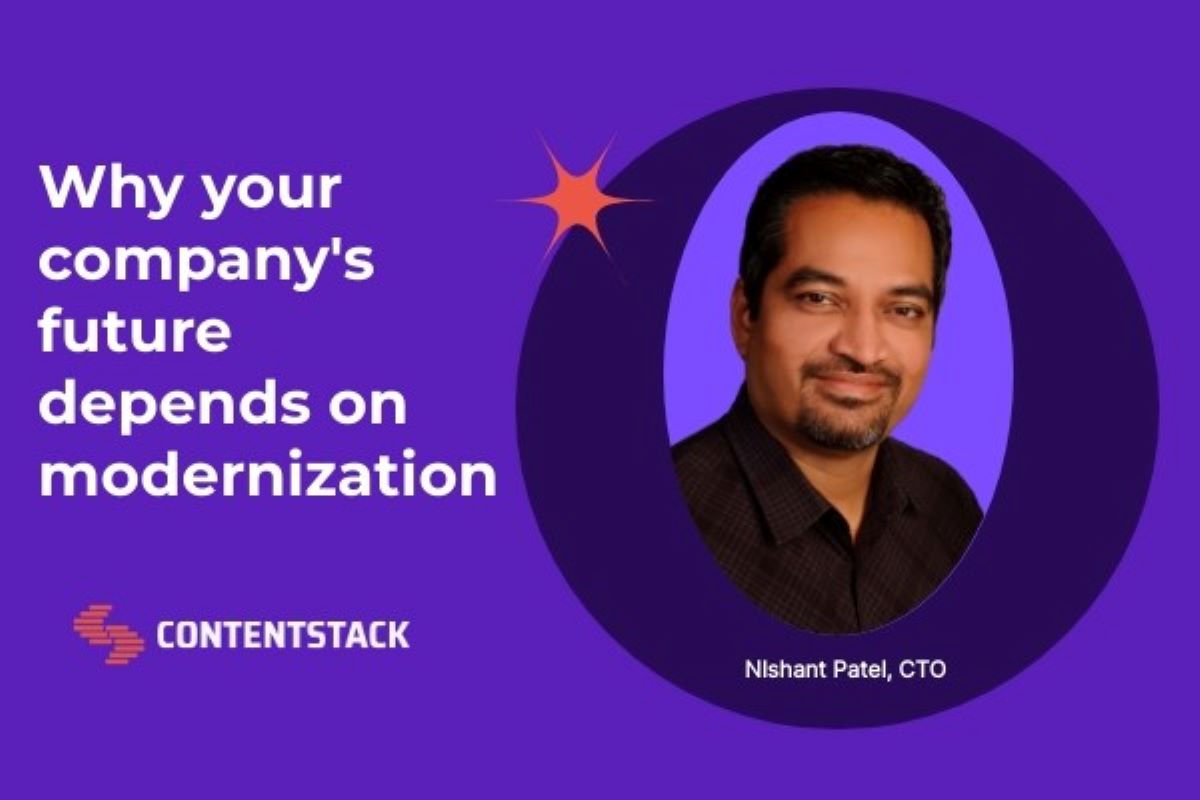Why your company’s future depends on modernization

In the early stages of my career, I joined a “cutting-edge” software company as an architect in the IT department. I don’t want to spoil the story, but the company was not, in fact, cutting-edge.
While the company purchased all sorts of tools it considered modern, its leaders didn’t stop to consider what successful implementation might look like, or how to educate and empower their people to use it well. Instead, we just accumulated new tech.
I left the company less than a year after joining.
I was reminded of this experience while listening to Chief Digital Officer of Dawn Foods Bob Howland share his story in a recent episode of the People Changing Enterprises podcast. He led the transformation of the 100-year-old bakery supplies company.
I love his perspective: Don't modernize for the sake of modernization. Don't do it because there are shiny new tools. Do it because your organization’s future depends on it.
If I could go back to that company and tell them why driving digital transformation is important, this is what I would say.
You no longer have to compromise all three: speed, quality and cost
In the podcast, Bob referred to speed, quality and cost as the triangle that all companies chase. I like to refer to that quest as the “Pursuit of Happiness.”
Think of the elements as sliders on a mixing board. You are constantly adjusting the mix in response to your priorities at the moment and you can usually get a perfect sound with two of the three elements. The third hopefully is not far behind. A general rule of thumb is that all can improve, given the right circumstances.
When we were a young startup, we bought certain functionalities of our technology rather than building them, for the sake of speed — for example, our rich-text editor. As we grew, we doubled down on enhancing every aspect of our product to our standards. That’s when we rebuilt our rich-text editor to be one of the most advanced available in any CMS today.
But when you’re a legacy company with outdated processes and technology, speed, quality and cost tend to be:
Unaligned with company priorities
Lagging far behind what they could be
As a result, the company suffers from unrealized potential and unnecessary complexity that limits them in some way. The quality of what you’re offering might be good, but the right technology could enhance it. While you might be able to operate with a level of speed that is good enough, there is a possibility to be quicker and more agile.
Bob said it like this in the podcast:
“Someone would say we're doing fine, and they would be right. And here comes this person that thinks about the world differently, and says, ‘We can still be that company, but we can be better.’ And when I say better, I mean better revenue, trajectory, lower costs and improved customer experience. That's how I define better.”
Your employees will feel empowered
Before their transformation, Dawn Foods’ sales team could better be referred to as order takers. The only way a customer could place an order was by writing it on a piece of paper and physically giving it to the rep when they were visiting their store.
So when the company pitched the idea of an online ordering system to shift the team’s priorities to strategic growth opportunities for the customer, they were hungry for it.
Modernizing your technology stack is not just to achieve speed, cost, and quality for the business — it’s for your people, too.
One of my jobs as a CTO is not only to create the tech roadmap for the future, it’s to empower the people the vision is for. Whether that’s implementing a new tool, iterating on an old process or making space for innovation.
For example, when my engineering team does “sprints” — meaning, working on development projects for two weeks at a time — we always allocate time for innovation. Twenty percent of an engineering sprint is dedicated to bug fixes and feature requests from customer success; eighty percent is given to their creative endeavors.
One benefit of digital transformation is that your employees can shift their focus and skills to meaningful tasks that can have impact. Your customers will be happy, and your employees will be satisfied and motivated.
You can deliver what customers need when they need it
For a customer, there’s nothing more frustrating than needing a feature to solve a problem and knowing that it might happen in the next year if it happens at all.
One of the goals of digital transformation should be that you are able to respond to customers’ needs much faster. You become an agile organization, like Dawn Foods. In just 22 weeks, they delivered a world-class catalog to get their customers excited about their products and streamline their experience. They couldn’t do that without moving to composable architecture and upgrading their technology stack.
At Contentstack, our head of global customer success and I sit down every two weeks and discuss what our customers have requested. We prioritize by making a “top 10 wish list” and we leverage our tech stack to deliver what they need. This is how we prioritize continuous transformation.
And this is what I know: Transformation is a constant, iterative improvement. It doesn’t have a designated stop or start period. There is no before and after. You nurture the relationships, set up the systems and processes and onboard the right tools. When you do that, your business and its stakeholders will thrive.
For 100 years, Dawn Foods was hugely successful. But when Bob came to them and showed them what they could be, the entire board agreed it was their only option to keep that success going for another hundred years.
Any enterprise can benefit from modernization — especially if it has been around for a very long time.
About Contentstack
The Contentstack team comprises highly skilled professionals specializing in product marketing, customer acquisition and retention, and digital marketing strategy. With extensive experience holding senior positions at renowned technology companies across Fortune 500, mid-size, and start-up sectors, our team offers impactful solutions based on diverse backgrounds and extensive industry knowledge.
Contentstack is on a mission to deliver the world’s best digital experiences through a fusion of cutting-edge content management, customer data, personalization, and AI technology. Iconic brands, such as AirFrance KLM, ASICS, Burberry, Mattel, Mitsubishi, and Walmart, depend on the platform to rise above the noise in today's crowded digital markets and gain their competitive edge.
In January 2025, Contentstack proudly secured its first-ever position as a Visionary in the 2025 Gartner® Magic Quadrant™ for Digital Experience Platforms (DXP). Further solidifying its prominent standing, Contentstack was recognized as a Leader in the Forrester Research, Inc. March 2025 report, “The Forrester Wave™: Content Management Systems (CMS), Q1 2025.” Contentstack was the only pure headless provider named as a Leader in the report, which evaluated 13 top CMS providers on 19 criteria for current offering and strategy.
Follow Contentstack on LinkedIn.







.svg?format=pjpg&auto=webp)
.svg?format=pjpg&auto=webp)
.png?format=pjpg&auto=webp)






.png?format=pjpg&auto=webp)


